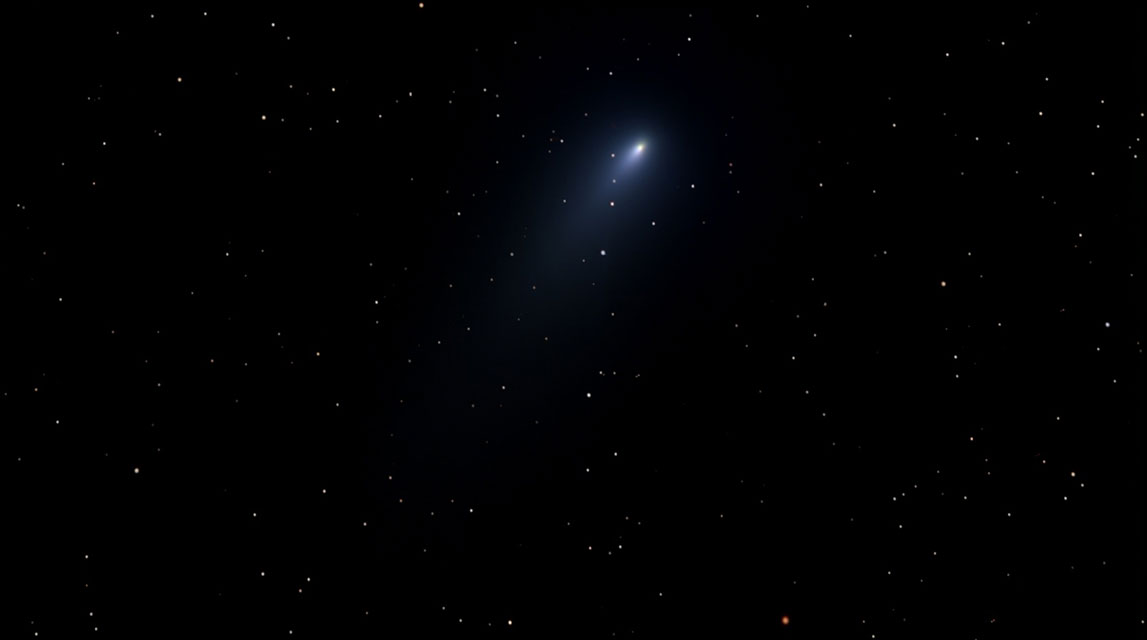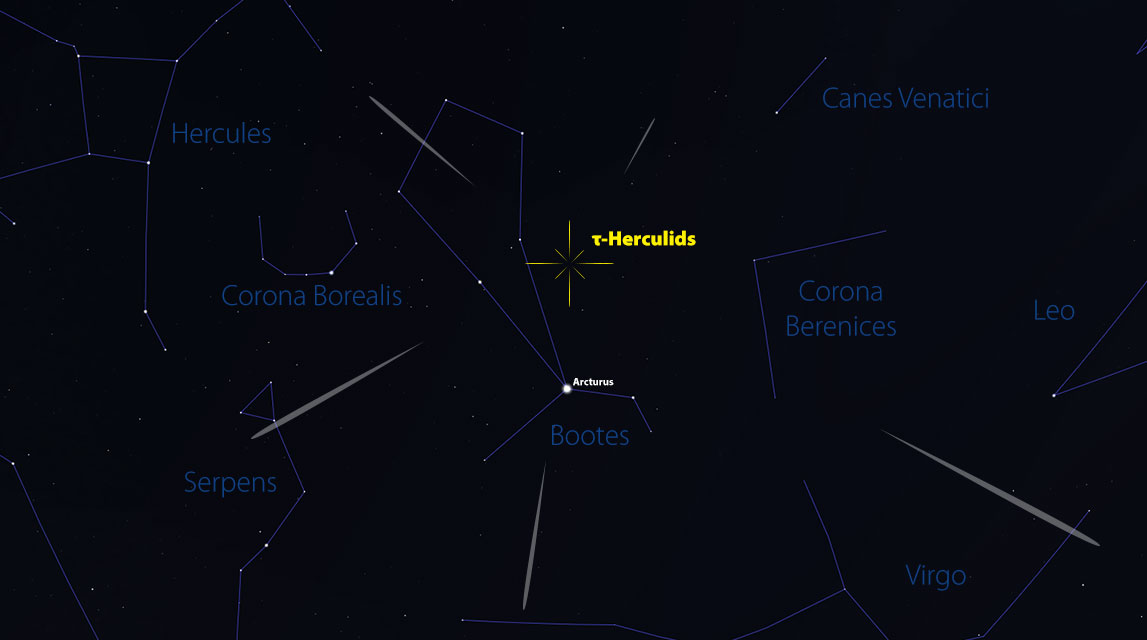
The image was taken at a dark sky location in western Arizona © Sid Leach
The tau Herculids (τ-Herculids) are an obscure shower produced by the remnants of comet 73P/Schwassmann-Wachmann 3. These meteors are only seen when the earth passes through one of the filaments produced by this comet during previous returns to perihelion. Mikhail Maslov has posted on the Forum of the International Meteor Organization that just such a chance exists on May 30 near 17:24 Universal Time, when the earth passes close to the debris shed by this comet in 1941. The passage to the core of the filament is not exceptionally close (.00207 AU or 192,421 miles) so little to no activity is expected. Any activity should be bright and interesting to witness therefore we encourage observers to view for at least an hour on this night and nights surrounding this date to verify any such activity.

The radiant is expected to be located near 211.2 (14:05) +29.7 at the time of maximum activity. This area of the sky is located on the border of Bootes and Canes Venatici, about 7 degrees west of the pair of 4th magnitude stars known as rho and sigma Bootes. Notice that this area of the sky is a bit west of the constellation of Hercules for which this shower is named. The actual radiant location can vary considerably from one display to another depending on the exact circumstances for each encounter. This area of the sky is above the horizon all night long as seen from the northern hemisphere and also well placed for the southern tropics. It should be noted that the true radiant area could be off by several degrees due to several factors, most notably zenith attraction. Therefore do not be too strict with shower association with these meteors. Any slow meteor close to intersecting the radiant area could be a tau Herculid. With an entry velocity of only 17km/sec., these meteors will appear to be extremely slow compared to most shower meteors.
This timing of 17:24 UT on May 30 is favorable for south and eastern Africa, the Middle East, and most of Asia. Regardless of your location, we would encourage you to try and see any activity from this source on the nights of May 29-31. If you do observe please post your results to the IMO Forum.
Five years from now on 31 May 2022, this same shower may produce a strong display as the earth plows though the central regions of the filament created by 73P/Schwassmann-Wachmann 3 during its return in 1995. We are all looking forward to that display!
 American Meteor Society
American Meteor Society